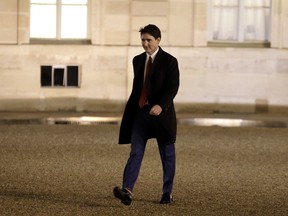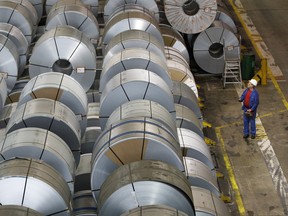And the drop in June may only be momentary relief
Article content
Inflation slowed in June, bolstering the Bank of Canada’s contention that outsized increases in the Consumer Price Index this spring were the result of temporary factors related to the pandemic.
Advertisement
This advertisement has not loaded yet, but your article continues below.
Article content
Canada’s CPI rose 3.1 per cent from June 2020, compared with a year-over-year increase of 3.6 per cent in May, Statistics Canada reported on July 28.
The May reading was the fastest in a decade and stoked concern that the Bank of Canada was losing its grip on inflation. Governor Tiff Macklem argued that the increase was exaggerated by the economic collapse a year earlier, which caused inflation to plunge to rates closer to zero. Macklem predicted headline inflation would slow as “base-year effects” became less of a factor in the year-over-year calculations.
Statistics Canada’s latest CPI report supports Macklem’s inflation outlook. The agency observed that prices had begun accelerating along with the economy’s recovery from the first wave of COVID-19 infections in June 2020, explaining slower inflation last month.
Advertisement
This advertisement has not loaded yet, but your article continues below.
Article content
To be sure, inflation remains above the Bank of Canada’s target range of one to three per cent, and the drop from May could represent only momentary relief. Inflation is also being influenced by supply-chain bottlenecks and rising gasoline prices — pressures that won’t be easily erased by more favourable year-over-year calculations. Stronger economic growth also could put upward pressure on prices, especially if post-lockdown demand exceeds supply.

“While the latest update to the CPI basket weighting may provide a slight downward bias to future price growth, we look for the inflation rate to remain elevated in the second half of 2021 driven by higher services prices as the recovery builds momentum,” Claire Fan, an economist at Royal Bank of Canada, said in a note to clients.
Advertisement
This advertisement has not loaded yet, but your article continues below.
Article content
In June, the shelter and transportation part of the CPI basket saw the most price growth of all major components, rising at 4.4 per cent and 5.6 per cent respectively. The biggest drop was in prices for clothing and footwear, which increased only 1.1 per cent from a year earlier.

U.S. inflation just topped 5 per cent. Is Canadian inflation next?

Don’t let the two-dose summer fool you — there is a long battle ahead against COVID-19

Tiff Macklem’s dashboard: Charting economy’s exit from pandemic puzzle
Gasoline prices over the past months have contributed to higher inflation due to the lows experienced at the outset of the pandemic. In June, prices rose at a slower rate of 32 per cent, compared to more than 43 per cent last month.
Advertisement
This advertisement has not loaded yet, but your article continues below.
Article content
The June numbers were the first to reflect Statistics Canada’s new CPI basket. Last week, the agency revised the weightings it applies to hundreds of goods and services to reflect current spending patterns. Statistics Canada said inflation in June also would have been 3.1 per cent under the old calculations.
• Email: bbharti@postmedia.com | Twitter: biancabharti
Listen to Down to Business for in-depth discussions and insights into the latest in Canadian business, available wherever you get your podcasts. Check out the latest episode below:
Advertisement
This advertisement has not loaded yet, but your article continues below.
Canadian inflation slows but still tops Bank of Canada’s target
2021-07-28 14:51:28






